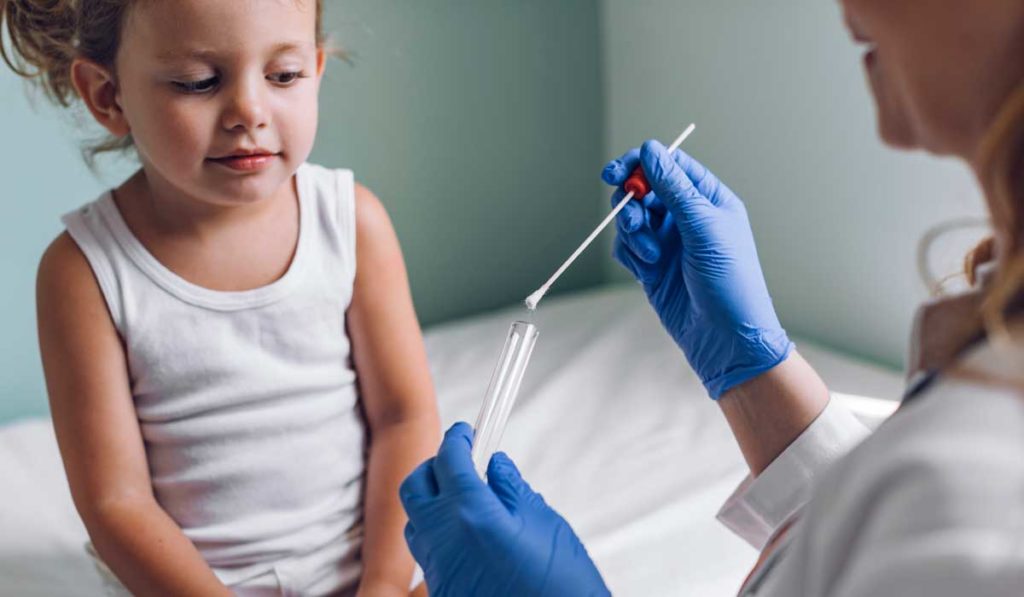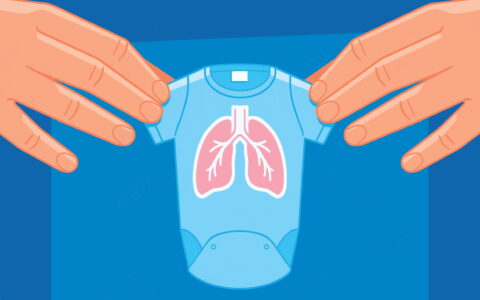CDC data have suggested that children infected with SARS-CoV-2 are less likely than adults to be hospitalized or show symptoms like fever, cough or shortness of breath. However, at this time there are few definite answers about how children are affected by SARS-CoV-2 or by COVID-19, the disease it causes. Concerns have heightened recently with news of cases of a pediatric multisystem inflammatory syndrome that may follow COVID-19.
The Human Epidemiology and Response to SARS-CoV-2 (HEROS) study, funded by the National Institute of Allergy and Infectious Disease (NIAID), will determine the percentage of children who develop symptoms of COVID-19 and how they transmit the virus. In addition, HEROS will examine whether rates of COVID-19 differ for children who have asthma or respiratory allergies.
Tina Hartert, M.D., Lulu H. Owen Chair and professor of medicine at Vanderbilt University Medical Center, is a principal investigator for the HEROS study. Hartert says it will help answer key questions about how the virus behaves in child populations: “Are they more resistant to it? Do they transmit it more readily? Are there protective factors? The answers to these questions will provide some data that may meaningfully inform decisions about how we reopen society,” Hartert said.
Rapid Study Enrollment
Until now, data on SARS-CoV-2 infection rates have been limited to people who physically interact with the health care system – either through testing or severe disease. While these data provide real-time guidance where testing is limited, “they don’t enable us to understand the full extent of SARS-CoV-2 infection in the entire population,” said Hartert.
“Most of us think that children are infected with the virus, they’re just much more likely to be asymptomatic — but thinking isn’t knowing,” she said.
The HEROS study will enroll 8,000 children and adults from U.S. families already participating in NIH-funded research studies. Primary participants will include both healthy children and children with asthma or other allergic conditions. Because the families are already enrolled in other ongoing studies, there is detailed information available about these children’s health, and they are accustomed to the study procedures.
The six-month study will follow the children and their families to determine who gets infected with SARS-CoV-2, whether the virus is transmitted to other family members, and which family members with the virus develop COVID-19. Every two weeks, the primary caregiver will collect nasal swabs from participating family members and answer questionnaires related to exposure and viral symptoms.
“Most of us think that children are infected with the virus, they’re just much more likely to be asymptomatic — but thinking isn’t knowing.”
COVID-19 and Allergic Diseases
Preliminary data from the NIAID suggest that having asthma or an allergic condition may reduce susceptibility to SARS-CoV-2 infection and severe disease. A recent NIAID-funded study examined upper and lower airway cells for the expression of ACE2, the gene that codes for the receptor the coronavirus uses to infect cells. Respiratory allergy, asthma, and controlled allergen exposure were associated with significantly reduced ACE2 expression in both children and adults.
The HEROS study will further clarify whether reduced ACE2 gene expression in airway cells of children with allergic diseases correlates with a lower rate of SARS-CoV-2 infection and COVID-19. It is highly unusual for a respiratory virus not to impact children and especially asthmatics, Hartert noted. “It’s one of the most common chronic diseases in childhood,” she said.
Until additional data become available, both the WHO and the CDC continue to classify asthma as a potentially high-risk underlying condition. “Until we know, it is safest to assume that some children and persons with asthma may be at increased risk,” Hartert said.
She hopes the HEROS study will help scientists better understand ACE2 ’s role and resilience factors that might be leveraged to protect the entire population. “We’re still in the early part of this pandemic,” she said.





